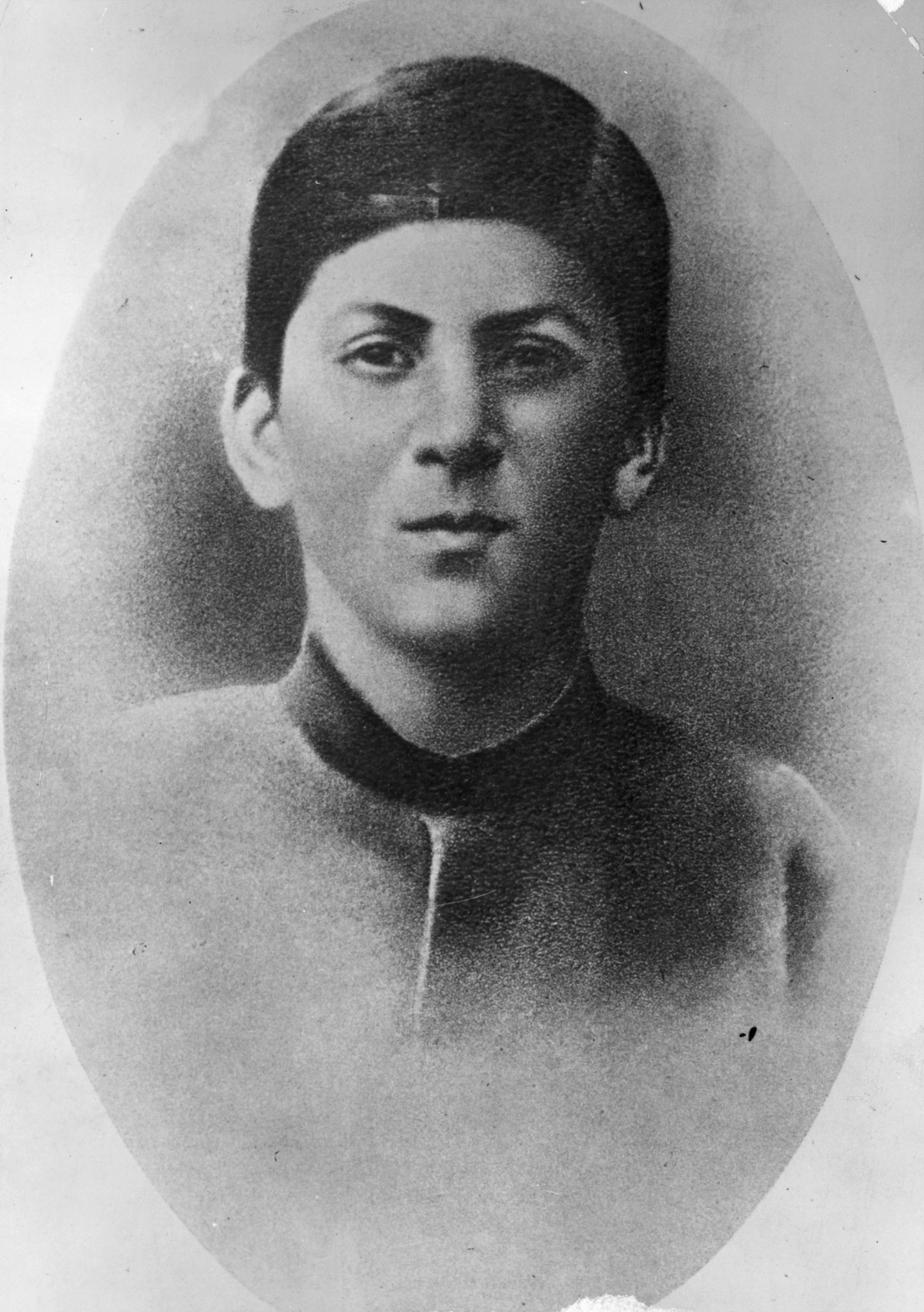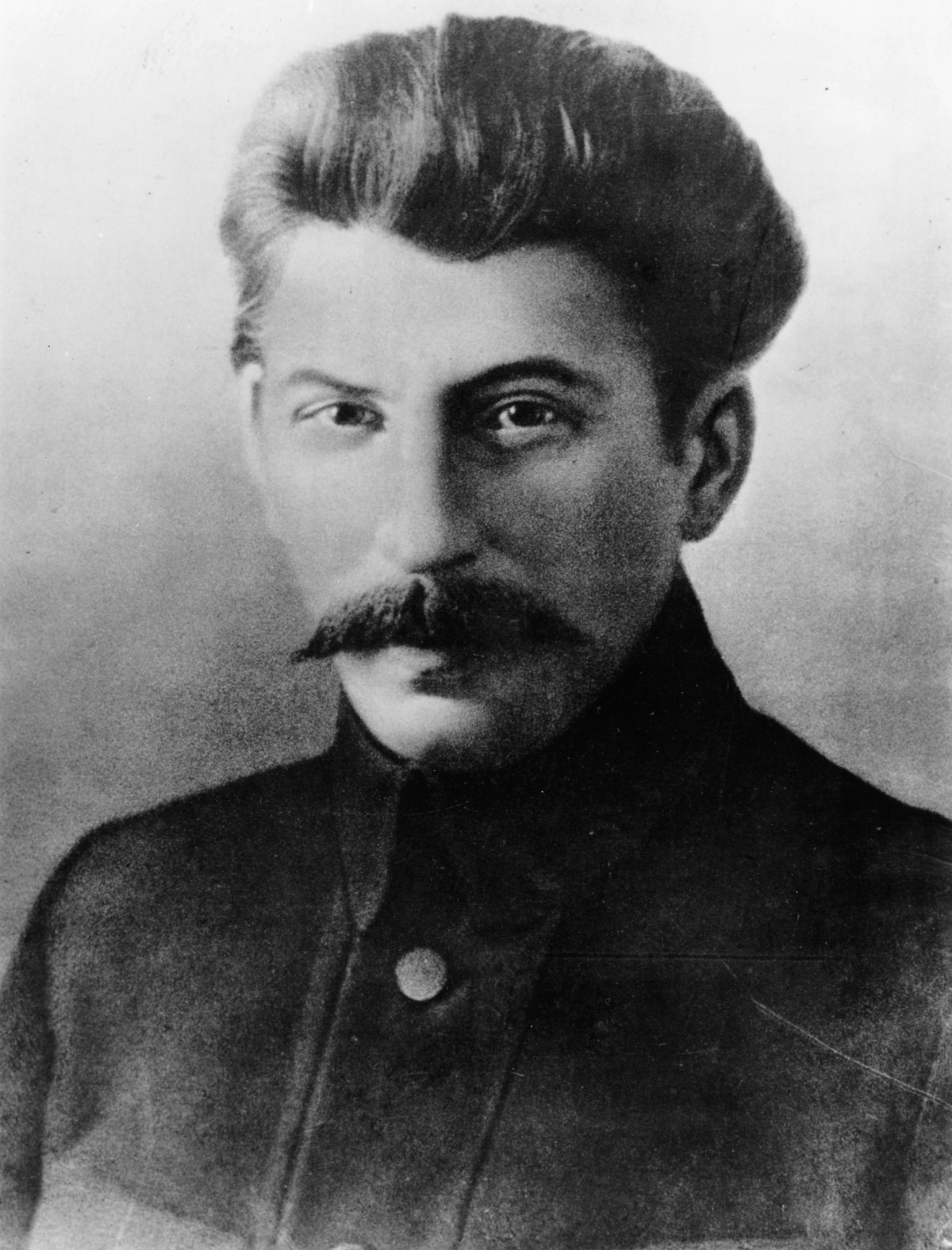A young Joseph Stalin before the USSR

 Soviet Communist leader Joseph Stalin (1879 — 1953), taken from a police file. (Photo by Hulton Archive/Getty Images)[/caption]
Soviet Communist leader Joseph Stalin (1879 — 1953), taken from a police file. (Photo by Hulton Archive/Getty Images)[/caption]
Stalin was not his name.
Born in Georgia, then part of the Russian Empire, in 1878, Ioseb Jughashvili was the son of a failing cobbler and a housemaid.
His father Besarion was an alcoholic, and, following an attack on the town's chief of police, was sent into exile.
In 1894, 16-year-old Ioseb attained a scholarship to Russia'a primary Russian Orthodox seminary. By the end of his first year, Ioseb had decided he did not believe in God.
Despite this decision, he remained in the seminary until 1899, when he was expelled for not sitting his final exams. But Ioseb had more significant issues occupying his mind; he read Lenin's works and enrolled in a Marxist political group.
It was at the seminary that Ioseb first began to use a pseudonym, though not "Stalin." He took the name "Koba" and demanded he be referred to as such by his fellow students. Koba is the name of "rob-from-the-rich, give-to-the-poor" hero of Alexander Kazbegi's novel The Patricide.
After leaving the seminary, Koba worked in a weather office until, in 1901, he became a full-time, boot-strapping underground revolutionary.
And as a revolutionary, he fermented unrest, provoking strikes and writing articles for underground publications. In 1904 he joined Lenin's newly formed Bolshevik group.
Koba accelerated his revolutionary activities within the Bolshevik group. In order to fund the group's work, he organised robberies and extortion — even kidnapping.
Around 1911 Koba changed his nom-de-plume to "Stalin," which derives from the Russian word for "steel" and in this case implies "man of steel."

Soviet leader Joseph Stalin (1879 — 1953), born Iosif Vissarionovich Dzhugashvili, pictured 1894. (Photo by Hulton Archive/Getty Images)
1894
Stalin at age 15.

Soviet Communist leader Joseph Stalin (1879 — 1953), taken from a police file. (Photo by Hulton Archive/Getty Images)
1901
A mugshot of 23-year-old Stalin from a police file.

1906: Soviet leader Joseph Stalin (1879 — 1953), born Iosif Vissarionovich Dzhugashvili. (Photo by Hulton Archive/Getty Images)
1906

Potrait anthropometrique de Joseph Staline (1879-1953) prise par les services de police du Tsar en mars 1908. Staline a connu une carriere de banditisme notamment l'attaque de la banque de Tbilissi en juin 1907 — Josef Stalin (1879-1953) czarist police file photograph, march 1908
March 1908
A mugshot of Stalin after an arrest.
I trust no one, not even myself.
JOSEPH STALIN

Baku Police form of the political criminal J Jugashvili (Stalin), 1910. Joseph Stalin (1879-1953) joined the Bolshevik movement in 1903. He organised strikes and other forms of revolutionary activity in the Caucusus. In 1910 he was arrested in Baku, Azerb (Photo by Fine Art Images/Heritage Images/Getty Images)
1910
A criminal file on Stalin following his arrest in Baku, Azerbaijan.

Soviet revolutionary and future dictator Joseph Stalin (1879 — 1953), 1911. (Photo by Hulton Archive/Getty Images)
1911

1911: Headshot portrait of young Russian revolutionary and political leader Josef Stalin (1879 — 1953). (Photo by Hulton Archive/Getty Images)
1911

Mugshot of Jospef Stalin taken by the Tsarist Secret Police in Saint Petersberg, as Stalin was fighting the Russian government prior to the 1917 revolution. Dated 1911. (Photo by: Universal History Archive/UIG via Getty Images)
1911
A mugshot of Stalin taken by the Tsarist Secret Police in St. Petersburg, Russia.

Future Soviet dictator Joseph Stalin (1879 — 1953) with a group of Bolshevik revolutionaries in Turukhansk, Russia, 1915. From left to right (standing): unknown, Suren Spandaryan, Stalin, Lev Kamenev, Grigory Petrovsky, Linde, Jacob Sverdloff, unknown; (seated) Fyodor Samoylov, Sergusheva, Badaieff and Nikolai Shagov. (Photo by General Photographic Agency/Hulton Archive/Getty Images)
1915
Stalin (standing, third from left) with a group of Bolshevik revolutionaries in Turukhansk, Russia.
Stalin did not fight during the First World War. As a child he had been struck on two separate occasions by horse-drawn carriages, causing permanent damage to his left arm, and exempting him from the front.
But at the April 1917 Communist Party conference, Stalin was voted onto the Bolshevik Central Committee. Six months later the committee voted for revolution. The 1917 October Revolution followed and immediately led to civil war.
Less than 10 years later, Stalin had become the General Secretary of the Central Committee of the Communist Party of the Soviet Union — in other words, dictator of the state. And as such, he generated and was granted a whole new slew of pseudonyms. Jughashvili became the "Brilliant Genius of Humanity," "Great Architect of Communism" and the "Gardener of Human Happiness."
The unusually smooth appearance of these pictures is a result of the retouching Stalin insisted be carried out to his images in order to hide the pockmark scars on his face, caused by smallpox he suffered as a child.

1917: Soviet leader Joseph Stalin (Iosif Vissarionovich Dzhugashvili, 1879 — 1953), as a leading Bolshevik. (Photo by Hulton Archive/Getty Images)
1917

Joseph stalin sitting at a table in 1918. (Photo by: Sovfoto/UIG via Getty Images)
1918

Russian revolutionaries leaders Josef Stalin, Vladimir Lenin and Mikhail Kalinin in 1919. (Photo by: Universal History Archive/UIG via Getty Images)
1919
Stalin with Vladimir Lenin and Mikhail Kalinin.
Политика конфиденциальности | Правила пользования сайтом







